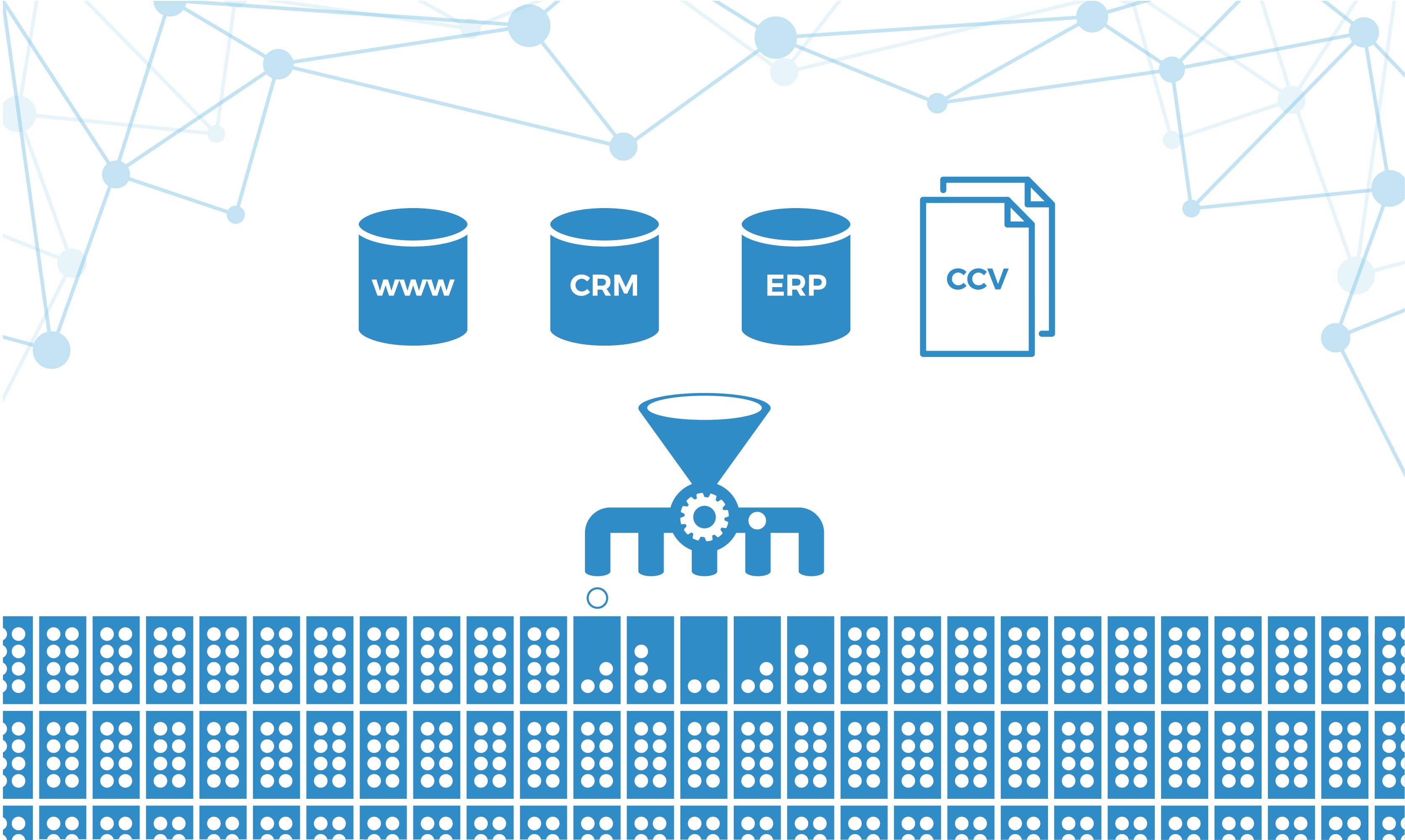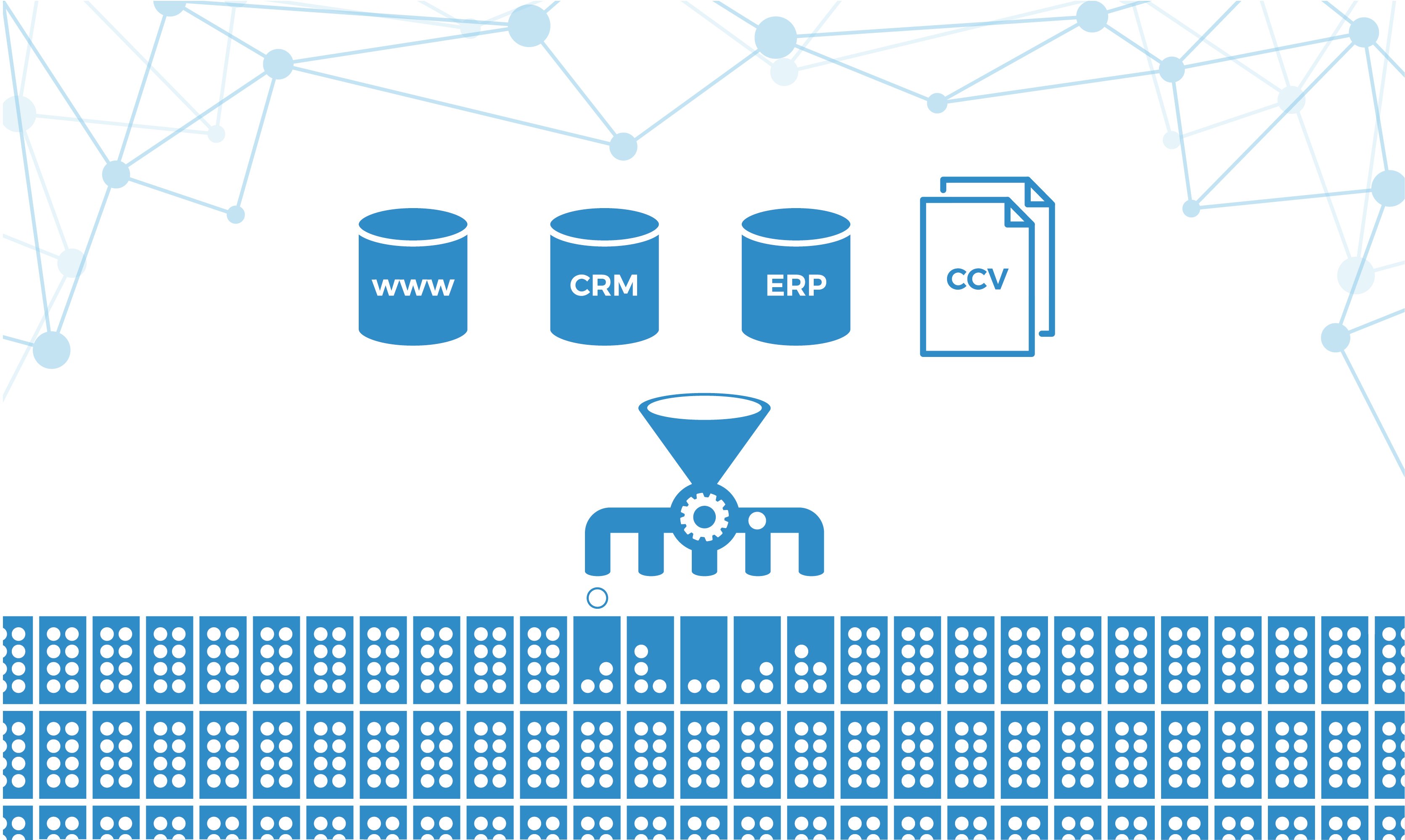Unlike a database, which is a mere data entry warehouse, a data warehouse is specially structured to favor the understanding and analysis of the data.
A data warehouse stores data. Its purpose is that the data can be consulted by the organization to extract useful information. Therefore, unlike a database, which is a mere data entry warehouse, a data warehouse is specially structured to favor the understanding and analysis of the data by the right person at the right time using business analysis tools such as Power BI.

What is a data warehouse?
A data warehouse is a large, centralized repository that stores and organizes data from multiple sources within an organization. Its primary purpose is to support business intelligence (BI) and data analysis activities by providing a structured and integrated view of the data, making it easier for users to query and analyze the information. That is why a data warehouse is not a regular database, since the architecture of a data warehouse fosters data processing and the transormation of data into business intelligence and insights.
Key characteristics of a data warehouse include:
-
Data Integration: A data warehouse consolidates data from various operational systems, databases, and external sources. This integration allows for a comprehensive and unified view of data from different departments and processes.
-
Time-Variant Data: Data warehouses store historical data over time, enabling users to analyze trends, changes, and performance metrics over different time periods.
-
Structured for Analysis: Data in a data warehouse is organized in a way that supports analytical queries and reporting. It is typically structured in dimensions and fact tables, facilitating data exploration and data aggregation.
-
Non-volatile Data: Once data is loaded into a data warehouse, it is generally non-volatile, meaning it is not frequently updated or changed. This ensures data consistency and integrity for analytical purposes.
-
Separation from Operational Systems: Data warehouses are separate from operational databases used for day-to-day transactions. This separation prevents analytical queries from impacting the performance of operational systems.
-
Query and Reporting Capabilities: Data warehouses often include tools or interfaces that allow users to query and generate reports on the stored data. These tools support business intelligence and data analysis activities.
-
Scalability and Performance: Data warehouses are designed to handle large volumes of data and support complex analytical queries efficiently, even with massive datasets.
By providing a single source of truth for analytical purposes, data warehouses empower organizations to gain valuable insights, make data-driven decisions, and discover meaningful patterns and trends within their data. They play a crucial role in facilitating business intelligence, data analytics, and strategic decision-making processes.
The data stored in a data warehouse come from various origins, internal departments or even external sources to the organization, and have different structures so you must perform a data integration process to incorporate them into the data warehouse, and in many cases also a process of standardization and data quality.
A data warehouse integrates the data in a consistent, non-volatile structure and organizes them by topics according to the needs of the users. Thinking of facilitating the tasks of analysis and dissemination, the information is structured in processes, views, dimensions and metrics following schemes such as those of star or snowflake. In addition, the data is linked to time, allowing historical and trend analysis.
Data warehouses can be hosted on enterprise servers or in the cloud. Data warehouse deployed in the cloud provide more flexibility, scalability and less maintenance costs.
Why do I want to have a data warehouse?
To make better business decisions that generate more revenue, cut costs, and provide better service to our customers.
It seems obvious, but let's break it down a bit: data warehouse transforms a large amount of operational data into something easy to understand, updated and correct that allows us to use business intelligence solutions to analyze short- and long-term trends, receive alerts and opportunities, substantiate our decisions and visualize a continuous feedback of them.
How do I know when I need a data warehouse in my company?
- If I need to integrate many different sources of data almost in real time.
- If I have a large amount of historical data to process or I must maintain historical records, even if the source transaction systems don't do it.
- If I need to restructure the data, consolidate it and/or change table and field names.
- If I need to clean up or improve the quality of the data for analysis.
- If I have performance problems because users query production systems directly.
- If I am at risk of users causing errors or data loss during their queries.
- If I have users from different departments with different versions of the truth.
- If I need to offer my users guarantees and simplicity for a self-service BI.
Data warehouse for a self-service approach to BI
A data warehouse plays a fundamental role in the implementation of a self-service Business Intelligence (BI) strategy within an organization. By definition, self-service BI empowers business users to access and analyze data independently, without heavy reliance on IT or data specialists. A well-designed data warehouse serves as a critical enabler for this approach.
If you are interested in the criteria to build an efficient self-service BI strategy within a company, don't miss our e-book: "10 best practices for the adoption of a self-service BI model".
One of the key challenges in enabling self-service BI is data complexity and fragmentation. In most organizations, data resides in various systems, databases, and applications, making it difficult for business users to access and analyze data seamlessly. Data warehouses address this issue by integrating data from multiple sources and creating a unified view of the data. This centralized repository simplifies data access for business users, as they can query and analyze data from a single location, without the need to navigate through multiple systems.
Data consistency and data quality are other significant challenges that data warehouses help overcome. The process of building a data warehouse involves data cleansing, transformation, and standardization, which ensures that data is reliable and accurate. This aspect is crucial for building trust among business users, as they can confidently rely on the data warehouse's data for their analysis and decision-making.
Moreover, data warehouses are designed to handle large volumes of data and support complex queries efficiently. Business users can perform ad-hoc querying, generate custom reports, and perform data exploration without concerns about slowing down operational systems or encountering performance issues. The scalability and performance of data warehouses make them a robust foundation for self-service BI, enabling users to interact with data without compromising on speed or accuracy.
Another vital aspect of self-service BI is empowering business users with the right business intelligence tools. Data warehouses are often integrated with user-friendly BI tools that provide intuitive interfaces for data exploration and analysis. These tools allow users to create their reports, perform data visualizations, and gain insights without requiring extensive technical skills. The combination of a data warehouse and user-friendly BI tools enhances the self-service BI experience, making data analysis accessible to a broader audience within the organization.
In conclusion, a data warehouse is an essential component for establishing a self-service BI strategy. It serves as a centralized and organized repository, simplifying data access, ensuring data consistency and quality, and supporting complex analysis. By empowering business users to interact with data independently, organizations foster a data-driven culture, enabling faster and informed decision-making across various business functions. The integration of data warehouses with user-friendly BI tools further enhances the self-service BI experience, democratizing data access and analysis throughout the organization.
What do we do at Bismart and why choose us?
At Bismart we offer data warehousing services that are totally adapted to your specific needs. Our proposal differs from others by the following factors:
- Best practices and market standards: Bismart is Microsoft's preferred partner in Business Intelligence and Big Data, having been awarded twice as the best partner worldwide in these areas. We also are a preferred Power BI partner company of Microsoft.
- Kimball Methodology: our project managers have extensive experience in the creation and deployment of BI platforms applying the Kimball methodology, created specifically for this type of project.
- Focus on data quality: in our projects it is a priority to guarantee data quality and it is always included in the data ingestion process.
- Meticulous in the creation of the data model: we strive to make the data models simple and that entities and fields are easily understandable for the users and don't lead to any confusion about their meaning and purpose.
- We take care of the aspect of the reports: we use usability criteria so that in addition to being visually nice, the reports are interactive, simple and accessible. We create themes and visual objects adapted to the style of the company and its corporate image.
- We take into account the future operation of the system: in all our projects we take into account the technological and functional evolution of the platform and how it should be managed.
- Constant updating of our solutions: Bismart provides BI solutions to companies and is one of the first to apply the novelties of the sector. This has led us to have extensive experience in big data and Modern Data Warehouse solutions which, unlike the traditional one, combine all types of data, structured, unstructured and semi-structured (sensor records, IoT and media transmission) using Microsoft Azure Data Factory for Microsoft Azure Data Lake or Azure Blob Storage.
At Bismart, we believe that strategic decisions should be based on data, not assumptions. For this, a Data Warehouse is a great ally and Bismart is the ideal company to help you implement it.
Before you go...
Don't miss our exclusive e-book with the best practices to build a self-service BI model among your organization.



